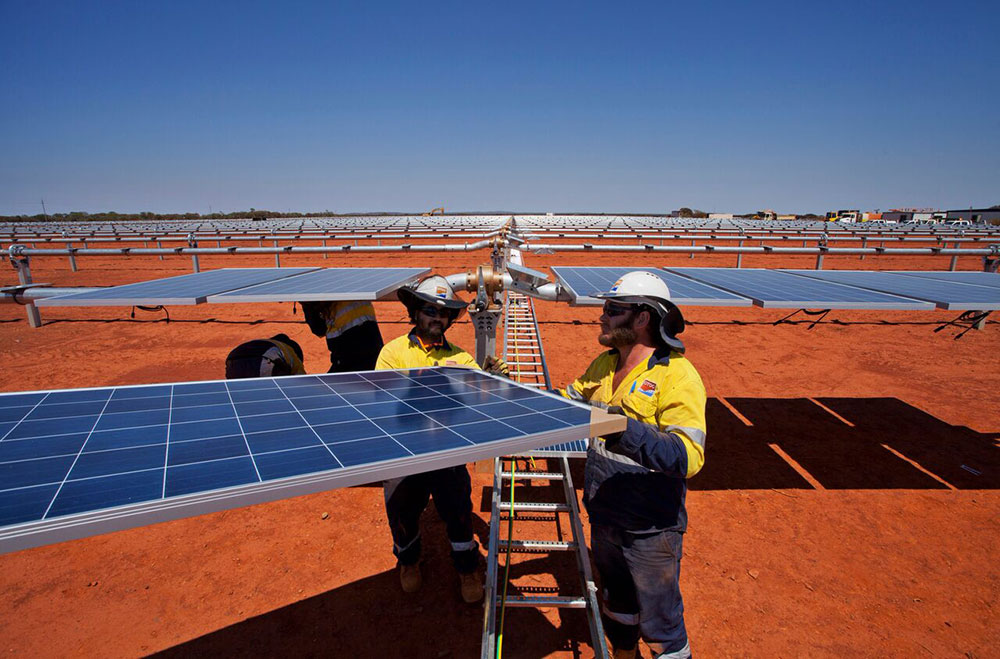Being one of the most energy-intensive industries, the mining sector’s shift away from fossil fuels is of the utmost importance for global decarbonization efforts. Fortunately, miners have begun to understand the value of renewables.
A new report by Fitch Solutions Macro Research, a unit of Fitch Group, shows that the mining industry’s transition to renewables has begun and is poised to pick up the pace in the coming years.
Presently, the majority of mining operations globally continue to rely on traditional power sources, mainly fossil fuel-based grid power or off-grid diesel-generated power, while accounting for up to 11% of global energy consumption.
But, with 1 GW of renewables already built at mining sites across the world, and another 1 GW in the pipeline, the transition appears to be well underway.
According to the Fitch report, the main reasons behind the shift away from traditional fuel sources to renewables among miners are the reduction of renewable power costs and the prospect of more reliable power supply, followed by environmental, social and governance (ESG) concerns.
Solar PV and wind are leading the way in installed renewables generation among mining companies, accompanied by solar thermal, with 37%, 59% and 4% share in 2017 respectively, the report finds.
Out in front
Mining markets with more favorable regulations and policies towards renewables will be ahead of the curve in the adoption of renewables in mining, with countries in the Americas standing out, the report notes.
For instance, Chile and Canada have already introduced carbon pricing schemes, at $5/tonne and $10/tonne, respectively, pushing miners to increasingly consider ways of limiting their carbon exposure. Chile is set to remain a global leader in regard to the number of mines adopting renewables and the total installed wind or solar capacity.
Up to nine different mining companies have installed either wind or solar capacity in the country to date, including copper mining giants Codelco and Collahuasi and Antofagasta Minerals, which boasts 191.5 MW of solar PV capacity at its operations, the report notes.
In other parts of the world, India’s ambitious renewable energy growth targets, including the 100 GW solar PV target by 2022, are expected to drive changes in the mining sector’s energy consumption, while China will ramp up mining-related environmental regulations as part of the government’s commitment to reduce 40-45% of greenhouse gas emissions by 2020.
Argentina and South Africa are set to follow suit and have already proposed carbon trading schemes of their own, with the latter’s set to be implemented by 2019, the report notes.

In terms of installed solar PV capacity at the mining site, Antofagasta Minerals tops the list, followed by another two compatriots CAP and Collahuasi with 101 MW and 25 MW respectively.
Australia’s Sandfire Resources comes in fourth with a 10.6 MW solar PV plant, which is coupled with a 6 MW battery and a 19 MW diesel generator, followed by a 6.7 MW solar array installed by Anglo-Australian conglomerate Rio Tinto at its mining site.

This content is protected by copyright and may not be reused. If you want to cooperate with us and would like to reuse some of our content, please contact: editors@pv-magazine.com.









2 comments
By submitting this form you agree to pv magazine using your data for the purposes of publishing your comment.
Your personal data will only be disclosed or otherwise transmitted to third parties for the purposes of spam filtering or if this is necessary for technical maintenance of the website. Any other transfer to third parties will not take place unless this is justified on the basis of applicable data protection regulations or if pv magazine is legally obliged to do so.
You may revoke this consent at any time with effect for the future, in which case your personal data will be deleted immediately. Otherwise, your data will be deleted if pv magazine has processed your request or the purpose of data storage is fulfilled.
Further information on data privacy can be found in our Data Protection Policy.